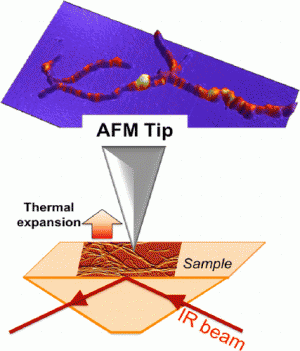Approach helps identify new biofuel sources that don't require farmland

While the debate over using crops for fuel continues, scientists are now reporting a new, fast approach to develop biofuel in a way that doesn't require removing valuable farmland from the food production chain. Their work examining the fuel-producing potential of Streptomyces, a soil bacterium known for making antibiotics, appears in ACS' The Journal of Physical Chemistry Letters. The method also could help researchers identify other microbes that could be novel potential fuel sources
Ariane Deniset-Besseau and colleagues point out that with the rise in oil prices in recent years, the search has been on for alternative fuels. Though plants such as soy and corn have been popular, the honeymoon ended as people realized how much arable land they were taking up. So now, researchers are seeking additional sources, including bacteria. Streptomyces has become a candidate in this search. It can make and store large amounts of oils called triacylglycerols (TAGs), which are direct precursors of biodiesel. Also, manufacturers already know how to grow vast amounts of it because pharmaceutical companies use the versatile bacterium to produce life-saving antibiotics. To better understand these microbes' potential as a fuel source, Deniset-Besseu's team wanted to explore how Streptomyces stores TAGs.
They used a novel laboratory instrument that combines an atomic force microscope with a tunable infrared laser source. This instrument allows researchers to determine how and where the bacteria store TAGs. Some strains hardly accumulate any oil, whereas others stored large amounts of oil in a way that might be easy to harvest. The researchers conclude that their technique could greatly speed up the identification of other microbes that could produce large amounts of bio-oil.
More information: "Monitoring Triacylglycerols Accumulation by Atomic Force Microscopy Based Infrared Spectroscopy in Streptomyces Species for Biodiesel Applications" J. Phys. Chem. Lett., 2014, 5, pp 654–658. DOI: 10.1021/jz402393a
Abstract
An atomic force microscope coupled with a tunable infrared laser source (AFM-IR) was used to measure the size and map the distribution of oil inclusions inside of microorganism without staining or other special sample preparation. The microorganism under study is Streptomyces, a soil bacterium that possesses the capability, under some specific nutritional conditions, to store its carbon source into TriAcylGlycerols, a potential direct source of biodiesel.
Journal information: Journal of Physical Chemistry Letters
Provided by American Chemical Society



















